2009.04.07
museum collecting
...have yet to compile all the museum plans within Quondam's collection, meaning adding Museum Annex, Calder Museum, Working Title Museum, Haus der Kunst, Cut & Paste Museum (and just as an aside, the latest REX museum seems to relate to the Cut & Paste Museum), Acropolis Q, Venue, Gallery Berwin, Circle Squared Museum, Domestic Museum, 5233, Villa Savoye(?), Palace of Versailles, and all the superimposed museum plans.
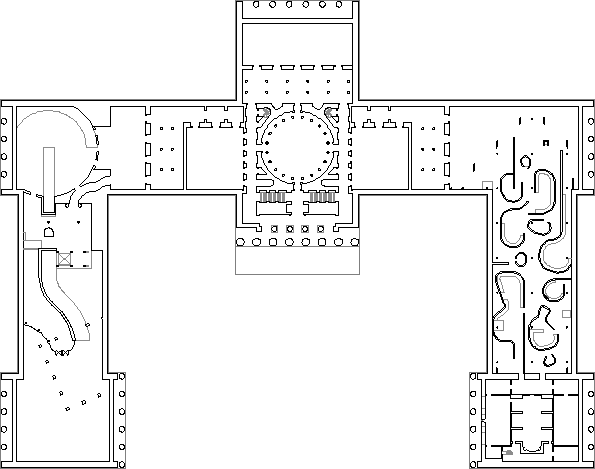
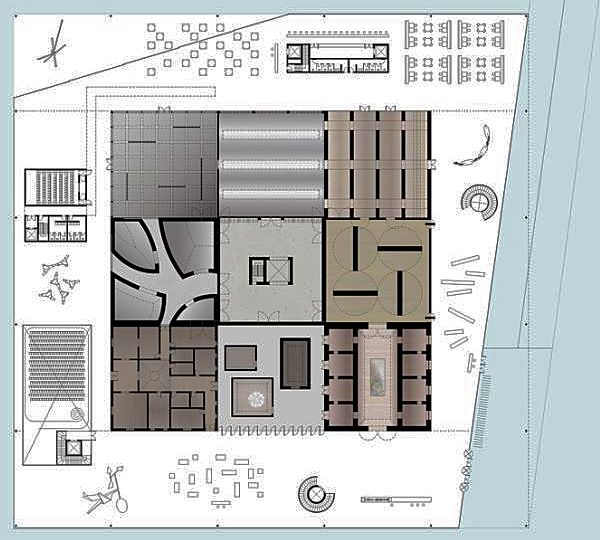
090506 Parkway Interpolation/ICM
c0506i01
2009.05.31 21:44
Developing a thesis (and metathesis?) - brainstorming help!
...it sounds like you're well on your way to designing a specific Siamese-twin museum: a museum of retroactive architecture cojoined with a museum of propassive architecture. If two buildings are not allowed, then design the operation that will split the two.
2009.08.02 14:34
inspiring Maya Linked Hybrid edge
"So an afterlife does not exist for us per se, but instead an afterlife occurs for that which exists between us. When an alien civilization eventually bumps into Earth, they will immediately be able to understand what humans were about, because what will remain is the network of relationships: who loved whom, who competed, who cheated, who laughed together over road trips and holiday dinners. Each person's ties to bosses, brothers, and lovers are etched into the electronic communiqués. The death switches simulate the society so completely that the entire social network is reconstructable. The planet's memories survive in zeros and ones."
from "Death Switch" in Sum
Don't underestimate the oblivion of a deleted archive, however.
2000.01.03:
PD writes:
What about the notion of life? In order to call a composition as a work of architecture there must be a life in it. A life around it does not make it architecture, I think. The composition must embrace a life style, must be an accompaniment of a life style but not be the focus of it. The objects which are for perception only, cannot be called architecture. They are called sculpture.
SL replies:
What PD writes comes across as very true as a reasonably way to approach "what is architecture?" as opposed "what is sculpture?" And for the most part I agree with the notion that architecture accommodates life. So I then ask if this 'definition' must be broadened to include all built forms that once accompanied life and a life style, but over time have come to no longer do so. I am thinking of ancient ruins, be they Stonehenge, the Pyramids, the Parthenon, the cave temples of India, etc. These are commonly referred to as examples of architecture, yet today they are clearly "objects which are for perception only." Have these architectures become architecture/sculpture hybrids? Furthermore, no one now lives in Le Corbusier's Villa Savoye, nor, it might be argued, does the life style around which the Villa Savoye was designed to accompany now exist. Is the Villa Savoye a master work of modern architecture that is now an "object which is for perception only?" Or is it merely that the 'life style" the Villa Savoye now accompanies is one where great buildings (if they're lucky) become cultural shrines, where the buildings now accommodate our 'perceptual worship'?
How much of life is really spent in perceptual worship?
"Meanwhile, the question posed in 1918 by the Hermitage's first commissar and futurist Nikolai Punin, "Is a Museum a Shrine or a Factory?" is yet to be answered."
from Content
2009.09.03 13:11
fashion tip (of the iceberg)
It was the "post-mortem discourse" that rekindled the vertigo of the mélange. The thought was post-modernism as still life.
But the strange fascination of still life, isn't it also a fiction? Or indeed an ethereal necrophilia?
--The Man without Qualities
The only gesture possible would seem to be stillness, what "in painting is called Stilleben (still life), or in other languages... natura morta (dead nature)."
--ibid
Life is magically arrested in its impermanence: "objects, animals, plants, landscapes and human bodies frozen into stillness by the magic of art," in a sort of "demonical" mystery.
--ibid
The world itseld seems to be suspended in an unending instant, in a landscape like the "sixth day of Creation, when God and the world were still alone, without men"
--ibid
"It is extraordinarily simple, but also very odd," says Ulrich.
"We have found many contrived answers," says Ulrich, "but we have overlooked th simplest: that both may have the intention and the capacity to take everything of which they have experience only as Gleichnis" And "every Gleichnis is ambivalent for the intellect, but for the feeling it is univocal;" and therefore it should be possible to experience "as oneness that which be common estimate is twofold."
"In that instant there occurred to Ulrich the idea of a state of life in which the being here was Gleichnis of the being there, and the impossible experience of being a person with two distinct bodies might lose the thorn of its impossibility."
Gleichnis is never Gleichheit.
--overall Franco Rella
He found Renfrew in a hectic mood, as close to desperation as Lew could recall.
... Lew had the sudden certitude that right now in Göttingen some bilocational Lew was asking Werfner the same question...]
--mirror::rorrim
"magnigicent chaos of the museum"
| |
2009.09.13 11:22
The Collapse of Distance - Benjamin/Virilio
You're thinking of A Landscape of Events (2000). Briefly looked through it last night.
From Tshumi's 'Forward':
"Time rather than space is the theme of this book: the collapse of time, the acceleration of time, the reversal of time, the simultaneity of all times. ... Space becomes temporal."
So, not so much about the collapse of distance...
Fell asleep reading "The Accident Museum", a text now already 23 years old, written soon after the Challenger explosion.
2009.09.21
what's going on
Ongoing work on the "museum of architects"--once all the texts are formatted add all the date data to the calendar and start to compile a new chronological list of events. The alphabetical list will also be completely linked to the decade lists (via the 'name' tag).
...the history of Quondam; ...early sketch of the morph from Court Gardener's House to Museum of Architecture...
... hints about writing/compiling a "novel" text composed of the earlier archin posts--all of them and somehow filling them out.
2009.09.30 21:33
Information Architects Talking About Architects and Architecture
Presently, I like to design delivery of content in the enfilade slash labyrinth style.
Perhaps, someday, I'll design some delivery of content following the architecturale promenade formula.
Actually, I've been struggling with a big design/renovation brief, the solution to which has been eluding me for well over a month now. Alas, today, while just stepping out of the shower, it finally dawned on me--delivery of content in the enfilade slash labyrinth style via bilocation.
Is subtext actually text bilocated?
4704b
2009.10.06 15:59
Examples of modern exterior with traditional interior
somewhat akin to the Getty...
 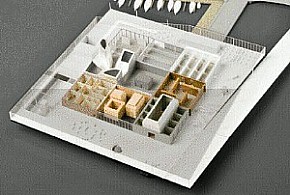
REX, Munch Museum, 2009
The compartmentalized approach leads to any number of mix-up possibilities.
otherwise...
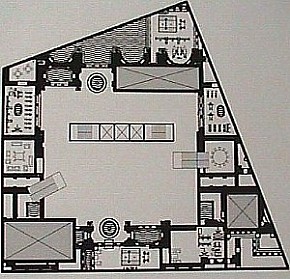
Level 1: lobby, bar. restaurant, spa, fitness, banquet rooms.
OMA and Herzog & de Meuron, Hotel Astor Place, 1999.
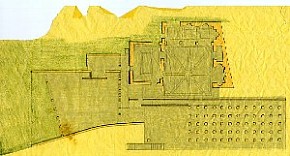
SL, Mayor's House, 1990.
| |
2009.11.16 09:55
The current state of Architectural Theory
"The ability of the computer to locate every point on a carved surface does away with the need for rational comprehension on the part of the designer in conceiving, or the observer in perceiving, a building. Thanks to the computer, pure empiricism has no longer any practical need for the mediating grasp of the intellect. The maximum of an empirical nominalism coexists with the maximum of abstraction. The space between nominalism and abstraction is left void. The mind no longer needs to understand itself. After a long evolutionary detour, human thought returns to its primitive instinctual roots."
Colquhoun (2005)
"...I was entranced by the work of James Gamble Rogers, the architect who designed most of Yale's Gothic and Georgian architecture in the 1920s and 1930s. Roger's determinedly nonideological stance, his avoidance of theory in favor of what can only be called intuitive design, was liberating. It was alright for architecture to be about feeling good, I suddenly realized; stage sets were not immoral. It was the perfect epiphany for a twenty-year-old who was just beginning to learn about empirical experience and only starting to trust his eye."
Goldberger (2009)
2009.11.16 11:37
Colquhoun isn't even saying "machine language" is "human being's unconscious."
....go ahead, argue it out. (fugi film platitudes not included?)
What if contemproary society actually is "narrcisstic Imaginary" and "Heroic (superstar's) Symbolics"?
I was just at the supermarket and apparently Angelina recently collapsed and is still losing weight. May I suggest stage right.
the Pitti penence:
I don't know why you say Dubai, and I say hell no. Hell no! Hell no!
2009.11.16 12:49
...what exactly is it that you see here as my opinion?
2009.11.16 14:03
I'm not offended. I'm merely asking you to clarify your statement as to my opinion.
You state my opinion is 'exactly structuralist's' and apparently because my opinion is 'exactly structuralist's' architecture theory has failed to understand post-structuralism or neo materialism.
Could you at least tell us what you mean by 'my opinion'.
2009.11.16 15:25
Jargon aside, it is now progressively easier for intuitive design intentions to become reality.
2009.11.17 11:42
Alan Colquhoun, Collected Essays in Architectural Criticism (2009), p. 342. Within the lecture "Changing Museum" (2005).
The passage relates specifically to Gehry's Guggenheim Bilbao, and was included here because it somewhat relates to my 'opinion' 2008.08.22 22:05.
2009.11.17 16:17
I like my raspberry bushes because they bear fruit twice a year, mid-spring and mid-autumn (like right now). And although still seasonal in their development, there's also this kind of double-helix thing about it.
Architecture theory structured as DNA?
Colquhoun's passage isn't really about how modeling systems work, rather how digital (modeling) data can be manufactured. It's about the voiding of the mediating grasp within the design/execution process. (Not too dissmilar from the voiding of the mediating grasp within the design/execution of self-publising, eg, blogging.)
2009.11.17 16:27
"i thought he was saying that you can like a form because it's sexy without needing to know anything else about it - or even needing to know why. eye to pleasure centers directly - do not pass through intellect. will have to think a little more about the implications of this hypothesis, whether for good or bad."
Steven Ward
2009.11.17 16:48
Steven, that's closer to what Goldberger said. It looks like you're interpolating from both quotations, which, for the most part, is fine, because there is, as you just unwittingly demonstrated, something about the the two quotations intertwined that could well be the germinating point of a[n architectural] value system.
2009.11.17 17:42
Perhaps the struggle today is more with the dual reality of "anything goes" and "whatever works".
2009.11.18 11:31
oe, it's not that "there really isnt meant to be any real thought there" but that "intellectual rigor" really isn't necessary to design architecture. In fact, it could well be asked: Does it really behoove us to mask our lack of depth and our inability to achieve real, effective, incisive strength in our work with intellectual nonsense? A lack of depth and an inability to achieve real, effective, incisive strength are not fixed with intellectual rigor, rather they are fixed via design rigor. The architectures of Zumthor, Predock and Chipperfield (for example) do not stand out because of their intellectual rigor, but because of their design rigor.
Yet design rigor isn't always necessary to create architecture either. Gehry's architecture exhibits a very high-grade design facileness, and maybe that is indeed something rare.
As for the "computer people", the various/sometimes architectures of Hadid and UnStudio (again for example) well demonstrate being beyond "figuring it out", and they're even doing it rigorously.
I'm not here trying to express my opinion, as much as I'm experimenting with establishing some kind of baseline for architectural theory to build upon. I am of the opinion, however, that honesty, or at least objective observations and assessments of present conditions, is a fair place to start.
2009.11.18 13:40
Is it Eisenman's words, or Eisenman's designs that might of made the likes of UNStudio, FOA and Lynn possible?
2009.11.19 17:32
Computers are not competing with thinking.
For the sake of the argument here, computers greatly augment/assist instinctive/intuitive design thinking. Designing instinctually/intuitively (for example, Villa Savoye derivatives) doesn't mean you're designing without thinking.
| |
2009.11.20 11:33
The current state of Architectural Theory
...the examples are intuitive in that that's how I now (use the computer to) sketch. Intuitive sketching is a "good way to find new things." Granted, this type of sketching is rigorous, but I also (use the computer to) sketch loosely[link: QABackg index]--especially see Ludi002, Maison l'Homme, and Villa Savoye and Maison l'Homme.
Personally, I'm not looking to guide the process, but to learn from it and/or find inspiration in it. I also just wanted to show that being intuitive with the aid of the computer isn't just about curved stuff.
It could be I feel my work is genuinely emcompassing enough in that I've embraced non-place[link: 18/1702] a long time ago. ;-)*
Perhaps you should try and embrace non-place yourself, and even try it with a non-guide, except maybe your instincts.
*don't let my glibness fool you
2009.11.20 13:27
...did I answer your question about what I mean by intuitive or not?
2009.11.20 15:34
Here's what comes to my mind when I (too) wrestle* with then what.
I made a bunch of collages during the summer of 2001. These were done for art, and not for architecture, but there was some architectonics within some of the collages.
Last year there was "has the sun finally set on oma?" thread here at archinect/forum. To join in the discussion I wanted to post images of a couple recent OMA projects that I like. And while finding the images online and seeing the projects again and trying to figure how to explain why I like the projects I noticed a kind of strange resemblance to two of the collages I did in 2001. (I did not think that maybe OMA saw the collages online.) What happened at that moment of 'recognition' was an insight into how I myself could have found architectural inspiration in the collages.
2009.11.20 15:46
similarly...
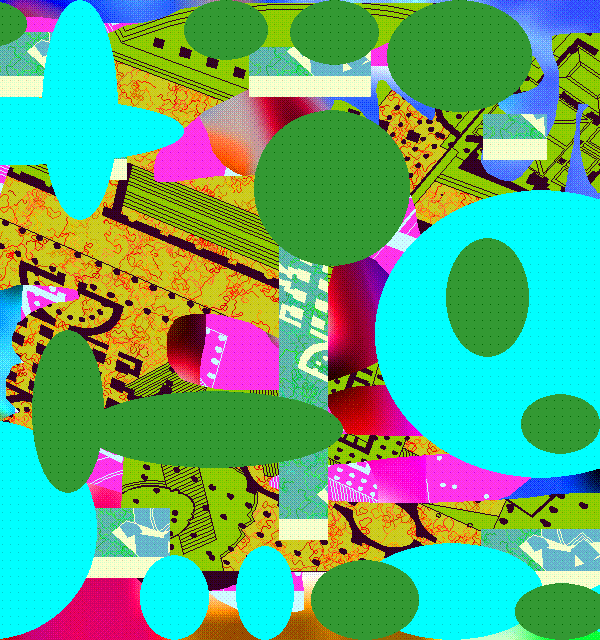
Quaestio Abstrusa Background No. 191
28 April 2001
manipulated digital image file
660 x 640 pixels

OMA/Rem Koolhaas
Quartier des Halles
2003 2004
2009.11.27 12:10
an (experimental inclined toward intuitive) architectural theory:
architectural design falls into three types:
intuitive architectural design
theoretical architectural design
experimental architectural design
with the three types forming a triade, thus each type can incline towards one or the other.
e.g.
the architecture of Frank Gehry -- intuitive architectural design inclined toward experimental architectural design
the architecture of Peter Eisenman -- experimental architectural design oscillating between theoretical and intuitive architectural design
the architecture of Le Corbusier -- theoretical architectural design oscillating between experimental and intuitive architectural design
Gothic architecture -- experimental architectural design inclined toward intuitive architectural design
Beaux Arts architecture -- theoretical architectural design oscillating slightly between experimental and intuitive architectural design
the architecture of Louis I. Kahn -- started as theoretical architectural design and ended as experimental architectural design inclined toward intuitive architectural design
the architecture of H&dM -- experimental architectural design inclined toward intuitive architectural design
the architecture of UNStudio -- theoretical architectural design inclined toward experimental architectural design
[to be continued]
|







